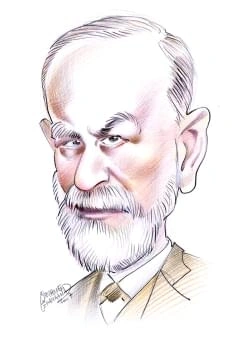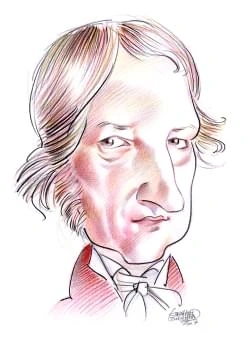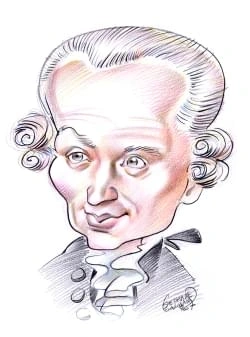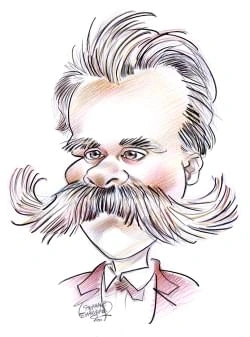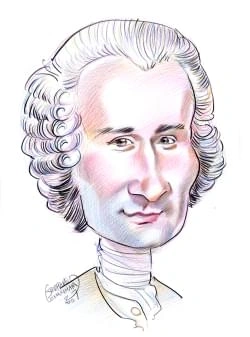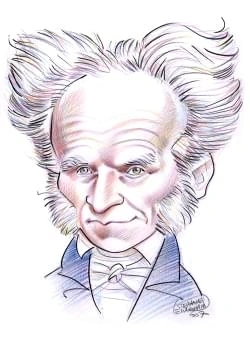233 résultats pour "forestry"
-
Jordan Facts and Figures.
Female 81.4 years (2008 estimate) Male 76.2 years (2008 estimate) Infant mortality rate 16 deaths per 1,000 live births (2008 estimate) Population per physician 493 people (2004) Population per hospital bed 588 people (2003) Literacy rateTotal 92.4 percent (2005 estimate) Female 87.9 percent (2005 estimate) Male 96.5 percent (2005 estimate) Education expenditure as a share of gross national product (GNP) 5.1 percent (1999-2000) Number of years of compulsory schooling 10 years (20...
-
Syria Facts and Figures.
Total 70.9 years (2008 estimate) Female 72.3 years (2008 estimate) Male 69.5 years (2008 estimate) Infant mortality rate 27 deaths per 1,000 live births (2008 estimate) Population per physician 1,887 people (2006) Population per hospital bed 667 people (2003) Literacy rateTotal 78.4 percent (2005 estimate) Female 66.1 percent (2005 estimate) Male 90.6 percent (2005 estimate) Education expenditure as a share of gross national product (GNP) 4.2 percent (2001-2002) Number of years...
-
Bahrain Facts and Figures.
HEALTH AND EDUCATIONLife expectancy Total 74.9 years (2008 estimate) Female 77.5 years (2008 estimate) Male 72.4 years (2008 estimate) Infant mortality rate 16 deaths per 1,000 live births (2008 estimate) Population per physician 920 people (2004) Population per hospital bed 357 people (2003) Literacy rateTotal 90 percent (2005 estimate) Female 86.4 percent (2005 estimate) Male 92.6 percent (2005 estimate) Education expenditure as a share of gross national product (GNP) 3.1 pe...
-
Norway Facts and Figures.
Infant mortality rate 4 deaths per 1,000 live births (2008 estimate) Population per physician 265 people (2006) Population per hospital bed 263 people (2000) Literacy rateTotal 99 percent (1995) Female Not available Male Not available Education expenditure as a share of gross national product (GNP) 7.6 percent (2002-2003) Number of years of compulsory schooling 11 years (2002-2003) Number of students per teacher, primary school 10 students per teacher (2002-2003) GOVERNMENTForm of g...
-
Italy Facts and Figures.
Population per hospital bed 227 people (2002) Literacy rateTotal 98.8 percent (2005 estimate) Female 98.4 percent (2005 estimate) Male 99.1 percent (2005 estimate) Education expenditure as a share of gross national product (GNP) 4.8 percent (2002-2003) Number of years of compulsory schooling 9 years (2001-2002) Number of students per teacher, primary school 11 students per teacher (2002-2003) GOVERNMENTForm of government Republic Head of state President Head of government Prime mini...
-
Turkey Facts and Figures.
Male 70.7 years (2008 estimate) Infant mortality rate 37 deaths per 1,000 live births (2008 estimate) Population per physician 641 people (2006) Population per hospital bed 385 people (2005) Literacy rateTotal 87.6 percent (2005 estimate) Female 80.1 percent (2005 estimate) Male 94.9 percent (2005 estimate) Education expenditure as a share of gross national product (GNP) 3.6 percent (2002-2003) Number of years of compulsory schooling 9 years (2002-2003) Number of students per teac...
-
Japan Facts and Figures.
Total 82.1 years (2008 estimate) Female 85.6 years (2008 estimate) Male 78.7 years (2008 estimate) Infant mortality rate 3 deaths per 1,000 live births (2008 estimate) Population per physician 497 people (2004) Population per hospital bed 70 people (2003) Literacy rateTotal 99 percent (1995) Female 99 percent (1993 estimate) Male 99 percent (1993 estimate) Education expenditure as a share of gross national product (GNP) 3.5 percent (2000-2001) Number of years of compulsory scho...
-
Argentina Facts and Figures.
Female 80.4 years (2008 estimate) Male 72.8 years (2008 estimate) Infant mortality rate 14 deaths per 1,000 live births (2008 estimate) Population per physician 332 people (2004) Population per hospital bed 244 people (2000) Literacy rateTotal 97.2 percent (2005 estimate) Female 97.3 percent (2005 estimate) Male 97.2 percent (2005 estimate) Education expenditure as a share of gross national product (GNP) 4.3 percent (2002-2003) Number of years of compulsory schooling 10 years (20...
-
-
South Korea Facts and Figures.
Female 81.1 years (2008 estimate) Male 74 years (2008 estimate) Infant mortality rate 6 deaths per 1,000 live births (2008 estimate) Population per physician 554 people (2004) Population per hospital bed 141 people (2003) Literacy rateTotal 98.4 percent (2005 estimate) Female 97.4 percent (2005 estimate) Male 99.3 percent (2005 estimate) Education expenditure as a share of gross national product (GNP) 4.2 percent (2002-2003) Number of years of compulsory schooling 9 years (2002-2...
-
Zimbabwe Facts and Figures.
HEALTH AND EDUCATIONLife expectancy Total 39.7 years (2008 estimate) Female 38.5 years (2008 estimate) Male 40.9 years (2008 estimate) Infant mortality rate 51 deaths per 1,000 live births (2008 estimate) Population per physician 6,199 people (2004) Population per hospital bed 1,959 people (1990) Literacy rateTotal 91.9 percent (2005 estimate) Female 88.7 percent (2005 estimate) Male 95.1 percent (2005 estimate) Education expenditure as a share of gross national product (GNP)...
-
Egypt Facts and Figures.
Infant mortality rate 28 deaths per 1,000 live births (2008 estimate) Population per physician 472 people (2004) Population per hospital bed 455 people (2003) Literacy rateTotal 59.3 percent (2005 estimate) Female 48.9 percent (2005 estimate) Male 69.4 percent (2005 estimate) Education expenditure as a share of gross national product (GNP) 4.1 percent (1999-2000) Number of years of compulsory schooling 8 years (2002-2003) Number of students per teacher, primary school 22 students per...
-
Kuwait Facts and Figures.
Other 2 percent HEALTH AND EDUCATIONLife expectancy Total 77.5 years (2008 estimate) Female 78.7 years (2008 estimate) Male 76.4 years (2008 estimate) Infant mortality rate 9 deaths per 1,000 live births (2008 estimate) Population per physician 656 people (2004) Population per hospital bed 455 people (2002) Literacy rateTotal 84.4 percent (2005 estimate) Female 82.9 percent (2005 estimate) Male 85.8 percent (2005 estimate) Education expenditure as a share of gross national...
-
Venezuela Facts and Figures.
HEALTH AND EDUCATIONLife expectancy Total 73.5 years (2008 estimate) Female 76.7 years (2008 estimate) Male 70.4 years (2008 estimate) Infant mortality rate 22 deaths per 1,000 live births (2008 estimate) Population per physician 516 people (2004) Population per hospital bed 1,250 people (2001) Literacy rateTotal 94 percent (2005 estimate) Female 93.8 percent (2005 estimate) Male 94.2 percent (2005 estimate) Education expenditure as a share of gross national product (GNP) 5.2...
-
Nigeria Facts and Figures.
Male 47.1 years (2008 estimate) Infant mortality rate 94 deaths per 1,000 live births (2008 estimate) Population per physician 3,715 people (2004) Population per hospital bed 599 people (1990) Literacy rateTotal 70.7 percent (2005 estimate) Female 63.8 percent (2005 estimate) Male 77.8 percent (2005 estimate) Education expenditure as a share of gross national product (GNP) 0.7 percent (1999-2000) Number of years of compulsory schooling 9 years (2002-2003) Number of students per te...
-
Saudi Arabia Facts and Figures.
Male 74 years (2008 estimate) Infant mortality rate 12 deaths per 1,000 live births (2008 estimate) Population per physician 727 people (2004) Population per hospital bed 455 people (2001) Literacy rateTotal 80.5 percent (2005 estimate) Female 73.3 percent (2005 estimate) Male 85.9 percent (2005 estimate) Education expenditure as a share of gross national product (GNP) 9.3 percent (1999-2000) Number of years of compulsory schooling 6 years (2002-2003) Number of students per teache...
-
France Facts and Figures.
Male 77.7 years (2008 estimate) Infant mortality rate 3 deaths per 1,000 live births (2008 estimate) Population per physician 293 people (2006) Population per hospital bed 130 people (2003) Literacy rateTotal 99 percent (1995) Female Not available Male Not available Education expenditure as a share of gross national product (GNP) 5.6 percent (2002-2003) Number of years of compulsory schooling 11 years (2002-2003) Number of students per teacher, primary school 19 students per teach...
-
-
Cyprus Facts and Figures.
Total 78.2 years (2008 estimate) Female 80.7 years (2008 estimate) Male 75.8 years (2008 estimate) Infant mortality rate 7 deaths per 1,000 live births (2008 estimate) Population per physician 30 people (2006) Population per hospital bed 227 people (2002) Literacy rateTotal 98 percent (2005 estimate) Female 96.9 percent (2005 estimate) Male 99.1 percent (2005 estimate) Education expenditure as a share of gross national product (GNP) 6.4 percent (2002-2003) Number of years of co...
-
Liberia - country.
West Atlantic, or Kwa linguistic groups. D Education Education is free and compulsory for children between the ages of 6 and 15. However, a scarcity of educational facilities means that few Liberians progress beyondprimary school. Almost all children of primary school-age attend school, but the figure drops to 23 percent (1999–2000) for secondary school-age children. Just 60percent of the population was literate in 2005. Higher education is provided by the University of Liberia (1862), in Monro...
-
Côte d'Ivoire - country.
D Culture Traditional artistic expressions in Côte d’Ivoire include woodcarvings (particularly masks), decorative fabrics, and acrobatic dancing. Urban populations have beengreatly influenced by French culture. The French language is almost universally used in the written literature of Côte d’Ivoire, to the exclusion of the African languages. IV ECONOMY About 60 percent of Côte d’Ivoire’s total labor force is employed in farming and forestry. Government efforts to avoid dependence on a small...
-
Somalia - country.
A Agriculture Livestock raising is the principal occupation in Somalia. The size of livestock herds began to recover in the mid-1990s after falling during the country’s civil war. Sheepand goats are the most numerous livestock, with smaller numbers of cattle. The principal crops grown are corn, sorghum, sugarcane, cassava, and bananas. B Forestry and Fishing While most wood is cut for fuel, Somalia’s major forestry export products before the 1990s were frankincense and myrrh. Fish is an import...
-
Sudan - country.
B Principal Cities and Political Divisions The principal city is Khartoum, the capital; other major cities include Omdurman and Khartoum North, major industrial centers, and Port Sudan, a seaport on the RedSea. Sudan is divided into 26 states. C Religion and Language About 70 percent of the people of Sudan are Muslims, some 15 percent are Christians, and most of the remainder follow traditional religions. The people of northernSudan are predominantly Sunni Muslims (Sunni Islam). Most of the pe...
-
Tanzania - country.
The population of Tanzania (2008 estimate) is 40,213,162, giving the country an overall population density of 45 persons per sq km (118 per sq mi). Yet the populationdistribution is irregular, with high densities found near fertile soils around Kilimanjaro and the shores of Lake Malawi, and comparatively low density throughout much ofthe interior of the country. In the late 1960s and 1970s the Tanzanian government resettled most of the rural population in collective farming villages as part of i...
-
Vermont - geography.
Forests cover 78 percent of Vermont. Most of the trees are deciduous, principally the maple, elm, birch, beech, oak, hickory, ash, cherry, and butternut. The state treeis the sugar maple, which provides Vermont’s famous maple syrup. Conifers are common in some mountain areas and include mainly the white pine, red spruce,hemlock, and cedar. A great variety of ferns have been found within the state. Among the more common wildflowers that grow in Vermont are anemones, arbutuses,violets, lilacs, dai...
-
Vermont - USA History.
Forests cover 78 percent of Vermont. Most of the trees are deciduous, principally the maple, elm, birch, beech, oak, hickory, ash, cherry, and butternut. The state treeis the sugar maple, which provides Vermont’s famous maple syrup. Conifers are common in some mountain areas and include mainly the white pine, red spruce,hemlock, and cedar. A great variety of ferns have been found within the state. Among the more common wildflowers that grow in Vermont are anemones, arbutuses,violets, lilacs, dai...
-
-
North Dakota - geography.
Bismarck, the growing season averages 134 days, as the average date of the last killing frost is May 11 and that of the first killing frost is September 22. The length ofthe growing season drops to about 110 days in the northerly reaches of the state. The long periods of summer sunshine at this latitude, providing as much as 16 hoursof daylight in summer, help crops to mature quickly, thus compensating somewhat for the relatively short growing season. Temperatures in the north are, on the averag...
-
North Dakota - USA History.
Bismarck, the growing season averages 134 days, as the average date of the last killing frost is May 11 and that of the first killing frost is September 22. The length ofthe growing season drops to about 110 days in the northerly reaches of the state. The long periods of summer sunshine at this latitude, providing as much as 16 hoursof daylight in summer, help crops to mature quickly, thus compensating somewhat for the relatively short growing season. Temperatures in the north are, on the averag...
-
Saskatchewan (province) - Geography.
The length of the frost-free season varies within the province. In the southwest, particularly in the valley lands along the South Saskatchewan River, the frost-freeperiod ranges from 150 to 160 days. Regina enjoys about 123 frost-free days, and Saskatoon has about 111. The far north has only from 85 to 95 frost-free days. One important characteristic of Saskatchewan’s climate is the great variability in temperature and precipitation from year to year, which is often critical for agriculture.The...
-
Saskatchewan (province) - Canadian History.
The length of the frost-free season varies within the province. In the southwest, particularly in the valley lands along the South Saskatchewan River, the frost-freeperiod ranges from 150 to 160 days. Regina enjoys about 123 frost-free days, and Saskatoon has about 111. The far north has only from 85 to 95 frost-free days. One important characteristic of Saskatchewan’s climate is the great variability in temperature and precipitation from year to year, which is often critical for agriculture.The...
-
Wisconsin (state) - geography.
-6° C (22° F) in the southeast, along the Lake Michigan shore. During winter extremely cold weather persists for several weeks at a time. C2 Precipitation Average annual precipitation ranges from 700 to 800 mm (28 to 32 in). Rainfall is generally heaviest during the spring and summer, and snowfall is generally moderatein the south, but can be quite heavy in the north. Thunderstorms, sometimes accompanied by devastating tornadoes, are common in spring and summer, particularly inthe southern part...
-
Wisconsin (state) - USA History.
-6° C (22° F) in the southeast, along the Lake Michigan shore. During winter extremely cold weather persists for several weeks at a time. C2 Precipitation Average annual precipitation ranges from 700 to 800 mm (28 to 32 in). Rainfall is generally heaviest during the spring and summer, and snowfall is generally moderatein the south, but can be quite heavy in the north. Thunderstorms, sometimes accompanied by devastating tornadoes, are common in spring and summer, particularly inthe southern part...
-
Arkansas - geography.
temperature rises to the upper 30°s C (lower 100°s F). C2 Precipitation Arkansas receives about 1,000 to 1,300 mm (about 40 to 50 in) of precipitation a year, and some areas receive even more. Most of the rain comes during winter andspring and at times is so heavy as to cause flooding. Snow is rare in the south but amounts to more than 250 mm (10 in) a year in the mountains. C3 Growing Season Arkansas has a long growing season. It averages 211 days for the state as a whole and ranges from 241...
-
Arkansas - USA History.
temperature rises to the upper 30°s C (lower 100°s F). C2 Precipitation Arkansas receives about 1,000 to 1,300 mm (about 40 to 50 in) of precipitation a year, and some areas receive even more. Most of the rain comes during winter andspring and at times is so heavy as to cause flooding. Snow is rare in the south but amounts to more than 250 mm (10 in) a year in the mountains. C3 Growing Season Arkansas has a long growing season. It averages 211 days for the state as a whole and ranges from 241...
-
-
Oklahoma - geography.
portion and the Panhandle are classified as a steppe, where precipitation, typically 250 to 500 mm (10 to 20 in), is the controlling characteristic. January is usually the coldest month with an average of about 3°C (38°F) and extremes from -33°C (-27°F), the lowest ever recorded, to 33°C (92°F). Summer arelong and hot with temperatures in the upper 30°s C (lower 100°s F) common from May until September across the state. The growing season varies from less than 180days in the western Panhandle to...
-
Oklahoma - USA History.
portion and the Panhandle are classified as a steppe, where precipitation, typically 250 to 500 mm (10 to 20 in), is the controlling characteristic. January is usually the coldest month with an average of about 3°C (38°F) and extremes from -33°C (-27°F), the lowest ever recorded, to 33°C (92°F). Summer arelong and hot with temperatures in the upper 30°s C (lower 100°s F) common from May until September across the state. The growing season varies from less than 180days in the western Panhandle to...
-
Michigan - geography.
The interior location of Michigan in the northern part of North America results in a continental climate, characterized by four definite seasons with moist, mild to hotsummers and snowy, cold winters. Winds off of Lakes Michigan and Superior in winter create heavy snow accumulations in nearby areas. The tempering effects of LakeMichigan account for the presence of the state’s famous fruit-growing belt along the lake’s shore. Since the water is colder than the land in spring, the westerly windspa...
-
Michigan - USA History.
The interior location of Michigan in the northern part of North America results in a continental climate, characterized by four definite seasons with moist, mild to hotsummers and snowy, cold winters. Winds off of Lakes Michigan and Superior in winter create heavy snow accumulations in nearby areas. The tempering effects of LakeMichigan account for the presence of the state’s famous fruit-growing belt along the lake’s shore. Since the water is colder than the land in spring, the westerly windspa...
-
Uzbekistan Facts and Figures.
Other 7.1 percent Religious affiliationsMuslim (mostly Sunni) 76 percent Atheist 3 percent Christian 2 percent Nonreligious 18 percent Other 1 percent HEALTH AND EDUCATIONLife expectancyTotal 65.4 years (2008 estimate) Female 69 years (2008 estimate) Male 62 years (2008 estimate) Infant mortality rate 68 deaths per 1,000 live births (2008 estimate) Population per physician 347 people (2004) Population per hospital bed 182 people (2003) Literacy rateTotal 99.2 percent (200...
-
F.Y.R.O. Macedonia Facts and Figures.
BASIC FACTS
Official name
The Former Yugoslav Republic
Other 3 percent Religious affiliationsOrthodox Christian (mostly Macedonian Orthodox) 60 percent Muslim 29 percent Nonreligious 7 percent Other 4 percent HEALTH AND EDUCATIONLife expectancy Total 74.5 years (2008 estimate) Female 77.1 years (2008 estimate) Male 72 years (2008 estimate) Infant mortality rate 9 deaths per 1,000 live births (2008 estimate) Population per physician 392 people (2006) Population per hospital bed 207 people (2002) Literacy rateTotal Not availabl...
-
Latvia Facts and Figures.
Protestant 24 percent Roman Catholic 20 percent Atheist 6 percent Other 1 percent HEALTH AND EDUCATIONLife expectancy Total 71.9 years (2008 estimate) Female 77.3 years (2008 estimate) Male 66.7 years (2008 estimate) Infant mortality rate 9 deaths per 1,000 live births (2008 estimate) Population per physician 319 people (2006) Population per hospital bed 128 people (2003) Literacy rateTotal 99.8 percent (2005 estimate) Female 99.8 percent (2005 estimate) Male 99.8 percen...
-
Kenya Facts and Figures.
Roman Catholic 23 percent Indigenous beliefs 12 percent Anglican 10 percent Muslim 7 percent Hindu 1 percent Other 4 percent HEALTH AND EDUCATIONLife expectancy Total 56.6 years (2008 estimate) Female 56.9 years (2008 estimate) Male 56.4 years (2008 estimate) Infant mortality rate 56 deaths per 1,000 live births (2008 estimate) Population per physician 7,195 people (2004) Population per hospital bed 607 people (1990) Literacy rateTotal 86.9 percent (2005 estimate) Fema...
-
-
Uganda Facts and Figures.
Ethnoreligionists or indigenous beliefs 4 percent Muslim 5 percent Other 10 percent HEALTH AND EDUCATIONLife expectancy Total 52.3 years (2008 estimate) Female 53.4 years (2008 estimate) Male 51.3 years (2008 estimate) Infant mortality rate 66 deaths per 1,000 live births (2008 estimate) Population per physician 12,086 people (2004) Population per hospital bed 1,091 people (1991) Literacy rateTotal 71.6 percent (2005 estimate) Female 62.7 percent (2005 estimate) Male 80.7...
-
Georgia (country) Facts and Figures.
Atheist 3 percent Roman Catholic 1 percent Nonreligious 15 percent Other 4 percent HEALTH AND EDUCATIONLife expectancy Total 76.5 years (2008 estimate) Female 80.3 years (2008 estimate) Male 73.2 years (2008 estimate) Infant mortality rate 17 deaths per 1,000 live births (2008 estimate) Population per physician 215 people (2006) Population per hospital bed 238 people (2003) Literacy rateTotal 99.5 percent (1995) Female 99.4 percent (1995) Male 99.7 percent (1995) Educ...
-
Central African Republic Facts and Figures.
Other Christians 23 percent Muslim 16 percent Indigenous beliefs 15 percent Other 14 percent NOTE: Christians are strongly influenced by animistic beliefs and practices. HEALTH AND EDUCATIONLife expectancy Total 44 years (2008 estimate) Female 44 years (2008 estimate) Male 43.9 years (2008 estimate) Infant mortality rate 82 deaths per 1,000 live births (2008 estimate) Population per physician 11,819 people (2004) Population per hospital bed 1,145 people (1990) Literacy rateT...
-
Bulgaria Facts and Figures.
Nonreligious 5 percent Other 11 percent HEALTH AND EDUCATIONLife expectancy Total 72.8 years (2008 estimate) Female 76.7 years (2008 estimate) Male 69.2 years (2008 estimate) Infant mortality rate 19 deaths per 1,000 live births (2008 estimate) Population per physician 4,000 people (2006) Population per hospital bed 159 people (2003) Literacy rateTotal 98.8 percent (2005 estimate) Female 98.4 percent (2005 estimate) Male 99.2 percent (2005 estimate) Education expenditure...
-
Finland Facts and Figures.
Nonreligious 5 percent Atheist 1 percent Other 7 percent HEALTH AND EDUCATIONLife expectancy Total 78.8 years (2008 estimate) Female 82.5 years (2008 estimate) Male 75.3 years (2008 estimate) Infant mortality rate 4 deaths per 1,000 live births (2008 estimate) Population per physician 303 people (2006) Population per hospital bed 139 people (2003) Literacy rateTotal 100 percent (1995) Female Not available Male Not available Education expenditure as a share of gross nati...
-
Romania Facts and Figures.
Nonreligious 7 percent Other 7 percent HEALTH AND EDUCATIONLife expectancy Total 72.2 years (2008 estimate) Female 75.9 years (2008 estimate) Male 68.7 years (2008 estimate) Infant mortality rate 24 deaths per 1,000 live births (2008 estimate) Population per physician 521 people (2006) Population per hospital bed 152 people (2003) Literacy rateTotal 98.5 percent (2005 estimate) Female 97.9 percent (2005 estimate) Male 99.2 percent (2005 estimate) Education expenditure as...
-
Myanmar Facts and Figures.
Indigenous beliefs 12 percent Protestant 6 percent Muslim 3 percent Hindu 2 percent Other 4 percent HEALTH AND EDUCATIONLife expectancy Total 62.9 years (2008 estimate) Female 65.3 years (2008 estimate) Male 60.7 years (2008 estimate) Infant mortality rate 49 deaths per 1,000 live births (2008 estimate) Population per physician 2,816 people (2004) Population per hospital bed 1,667 people (2000) Literacy rateTotal 86.2 percent (2005 estimate) Female 82.8 percent (2005 est...
-
Mongolia Facts and Figures.
Muslim 5 percent Nonreligious 30 percent Other 2 percent HEALTH AND EDUCATIONLife expectancy Total 67.3 years (2008 estimate) Female 69.8 years (2008 estimate) Male 64.9 years (2008 estimate) Infant mortality rate 41 deaths per 1,000 live births (2008 estimate) Population per physician 375 people (2004) Population per hospital bed 87 people (1991) Literacy rateTotal 99.2 percent (2005 estimate) Female 99.1 percent (2005 estimate) Male 99.2 percent (2005 estimate) Educat...
-
-
Hungary Facts and Figures.
Calvinist 20 percent Lutheran 5 percent Atheist 4 percent Nonreligious 7 percent Other 1 percent HEALTH AND EDUCATIONLife expectancy Total 73.2 years (2008 estimate) Female 77.6 years (2008 estimate) Male 69 years (2008 estimate) Infant mortality rate 8 deaths per 1,000 live births (2008 estimate) Population per physician 329 people (2006) Population per hospital bed 128 people (2003) Literacy rateTotal 99.4 percent (2005 estimate) Female 99.3 percent (2005 estimate) M...
-
Vietnam Facts and Figures.
HEALTH AND EDUCATIONLife expectancy Total 71.3 years (2008 estimate) Female 74.3 years (2008 estimate) Male 68.5 years (2008 estimate) Infant mortality rate 24 deaths per 1,000 live births (2008 estimate) Population per physician 1,871 people (2004) Population per hospital bed 417 people (2001) Literacy rateTotal 94.4 percent (2005 estimate) Female 92.9 percent (2005 estimate) Male 96 percent (2005 estimate) Education expenditure as a share of gross national product (GNP) 3 pe...
}})
